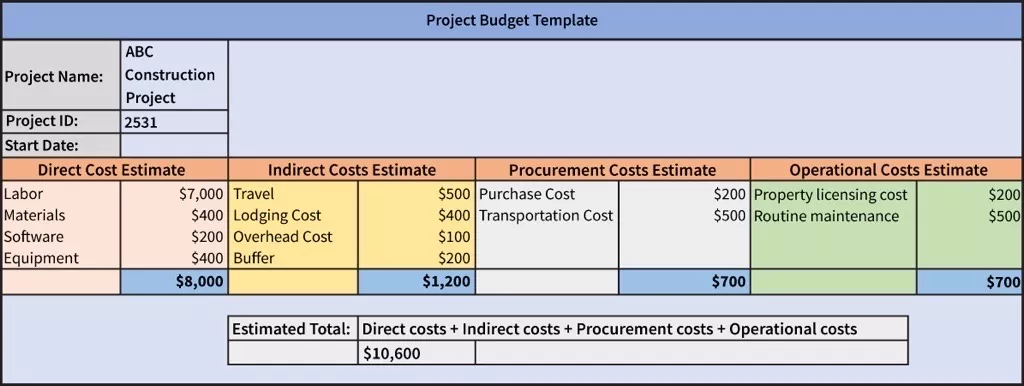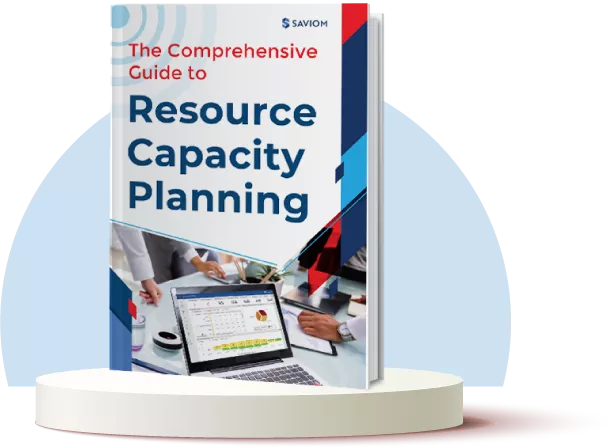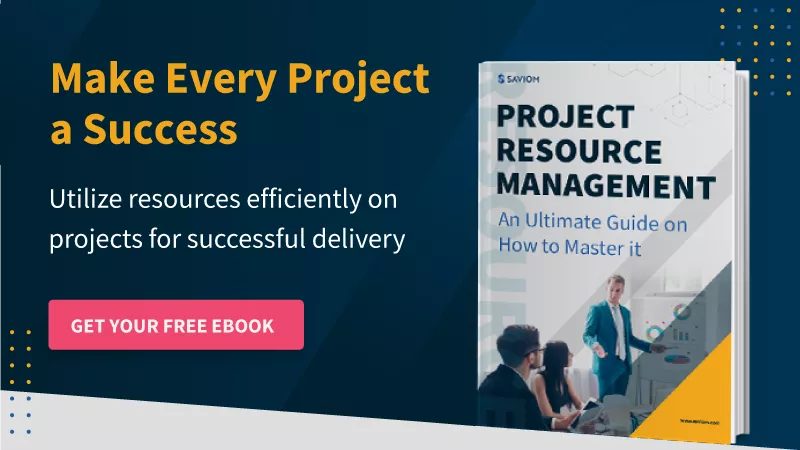“Budget is a proxy for project planning.” ~ Aidan Byrne, CEO of the Australian Research Council.
This quote aptly underscores the significance of a well-structured project budget in the successful execution and delivery of any project.
Project budgeting typically takes place before the project begins. It helps determine the financial feasibility of the project and identify cost-cutting opportunities. Moreover, it enables project managers to allocate resources optimally, control expenditures, and anticipate potential financial risks.
A reasonable project budget fosters better decision-making and accountability throughout the project lifecycle. It is a benchmark for tracking progress, enabling project teams to make timely adjustments, prevent financial discrepancies, and ensure successful delivery.
In this article, we will walk you through eight easy-to-follow steps to create a realistic budget that secures approval and drives profitability.
But, before going into the nitty-gritty, let’s define the term project budget.
What is a Project Budget?
The project budget is a financial document detailing the combined costs of all activities and resources necessary to successfully deliver a project over a defined period. It includes all anticipated expenses such as labor, materials, overhead, equipment, and contingency funds.
Project managers create the budget during the planning stage. They are responsible for monitoring and controlling the expenditure throughout the project lifecycle to avoid cost overruns. They must also take proactive corrective measures to course-correct any variances and keep the project within pre-determined financial constraints.
Now, let’s look at the various components of the project budget.
Components of a Project Budget
Here’s a list of common cost categories that come under project budget:
- Direct Costs
These expenses are directly attributed to the project’s deliverables and activities. It includes the salaries of full-time or contingent workers, software, equipment costs, manufacturing supplies, and more.
- Indirect Costs
These costs are not directly attributable to a project but are necessary for the business’s overall operations. It comprises travel expenses, lodging charges, and overhead costs like electricity, building maintenance, utilities, etc.
- Procurement Costs
These costs are expenses incurred during the procurement of goods and services. It includes transportation costs, taxes, delivery charges, invoice processing fees, and more.
- Operational Costs
These are the costs incurred in the day-to-day running of the project. Such expenses include staff wages, training, routine maintenance, licensing, and support fees.
- Miscellaneous Costs
Unforeseen costs that do not fall under the above categories but are necessary for the project come under this category. This includes expenses related to training, conferences, travel, or special permits that support the project’s successful execution and timely completion.
With the basic idea of project cost categorization, let’s explore the various techniques for estimating a project budget.
Project Budgeting Techniques
Here are five project estimation techniques to calculate project costs catering to different project types:
Top-Down Estimation
“Set an overall budget and then split it into individual tasks.”
Top-down estimation starts with setting the overall project budget based on past project data and organizational experience. The overall estimate is then divided into smaller parts to calculate individual costs for each process. This method is most suitable when working with a fixed project budget. However, it may lack precision because it does not consider task-specific details.
Bottom-Up Estimation
“Estimate the expenses of individual phase/task and then total it.”
Bottom-up estimation is considered the most accurate technique for estimating the project budget. This method comprises identifying and estimating the cost of individual tasks or project milestones and then aggregating these expenses to calculate the total project budget. This technique allows managers to create a detailed budget plan that comprehensively covers all project milestones and costs.
Read More: What are Project Milestones, and Why is it Important?
Three-Point Estimation
“Take the best, worst, and most likely case estimates.”
The three-point estimation calculates a project based on three situations: best-case (optimistic), worst-case (pessimistic), and most likely. This approach allows managers to consider risks and variability while estimating the project cost. However, this method requires detailed input for each task. It also reduces the risk of exceeding the budget by establishing three more accurate and realistic scenarios.
Analogous Estimation
“Predict the budget by analyzing similar prior projects.”
Analogous estimation uses budget data and best practices from similar past projects to estimate how much the present project may cost. Adjustments in cost can be made for differences in scale, complexity, or scope. This method is useful when historical data is available. However, it is less accurate as it relies on past project data.
Parametric Estimation
“Suggest a budget for a new project using the data of similar prior projects.”
The parametric approach uses statistical analysis and historical data to evaluate project costs. It first identifies key project variables such as resource requirements and time. Then, it applies mathematical models for more accurate cost predictions. This method can be used for projects with measurable activities but requires detailed historical data.
Read More: Effective Strategies for Resource Estimation in Project Management
Now that you know various project estimation techniques, given below is a real-life example of budgeting for better understanding.
Project Budget Example
To further illustrate how a project budget is created, let’s assume you’re a project manager overseeing ABC’s construction project.
To get started, you need to break the project into tasks, subtasks, and milestones. Then, with the tasks broken down for the project, you may need to perform resource estimation for effective cost calculation. A construction project requires diverse expertise, from on-site workers and engineers to highly skilled architects and supervisors. In addition, you must account for heavy equipment (bulldozers, excavators, cranes, etc.) and materials (wood, metals, bricks, cement, etc.) needed for the project.
Beyond these core requirements, other costs include travel expenses and renting space to house the team. You’ll also have to consider any uncertain miscellaneous costs, such as training or workshops, that are more likely to occur during the project progression. The construction project is unique due to its vulnerable climatic and environmental dependencies. Therefore, managers should also plan and keep a contingency fund in place.
Below is the project budgeting sample template:

After creating a project plan, managers must account for all these factors – resources, materials, labor, operational costs, and potential risks to create a comprehensive project budget. In addition, monitoring and tracking the expenditure with planned vs. actuals at every phase is a must to avoid unmanageable overruns.
Having understood how to create a budget, let’s delve deeper into the significance of budgeting in project planning.
Read More: What is a Project Plan & How to Create an Effective One?
Why Do You Need a Project Budget?
A meticulously planned budget is the holy grail of successful project management. It provides a clear roadmap for planning activities across different phases and ensuring the project is executed within the defined financial constraints. Moreover, it drives the project’s funding by allowing stakeholders to evaluate how much money is needed and at what stage, ultimately helping them calculate potential ROI.
The budget serves as a baseline for tracking and controlling expenses throughout the project lifecycle. It allows timely interventions to prevent unnecessary cost escalations and keep projects in sync with the original financial plan.
Besides, a budget is a comprehensive and inclusive statement of every expense incurred during a project. Therefore, it helps allocate business resources appropriately to operational tasks, forms the right band mix, and enhances efficiency, improving the overall project success.
Now that you’re aware of the importance of a project budget, the following section highlights the key challenges managers face while forming a budget.
Common Challenges in Creating a Project Budget
An inadequate budget is one of the prime causes of project failure. To ensure effective budget management and avoid setbacks, it’s crucial to pay attention to these common pitfalls:
Underestimating Project Expenses
Underestimating project expenses is a common mistake that managers make while creating budgets. This situation arises when project phases or tasks are not properly outlined, or expenses are not listed thoroughly. Consequently, funds may fall short, compromising the project’s feasibility and delivery.
Unclear Project Scope
Project scope is a critical component that outlines the objectives, deliverables, and boundaries of the undertaking. Without a clearly defined scope, estimating the expenses of each project phase becomes difficult. As a result, it increases the chances of scope creep, which can inflate the overall budget.
Inappropriate Resource Allocation
When resources are not estimated and allocated correctly, it can cause skill mismatches or shortages. This ultimately leads to the expensive hiring of skilled resources at the eleventh hour. Similarly, failure to procure essential raw materials or equipment ahead of time can lead to potential delays, resulting in schedule and budget overruns.
Read More: What is Resource Allocation, and Why is it Important?
Unexpected Risks and Issues
In project management, risks like scope creep, resource shortages, and ad hoc changes can cause budget escalations. Without a proper contingency plan, these risks can disrupt the project’s progress, drain the assigned budget, and compel the need for additional funding, thereby reducing profit margins.
Lack of Flexibility
A stringent budget can limit flexibility. It prevents managers from making changes like reallocating resources or accommodating changes in scope or project priorities. Eventually, this rigidity can hinder the project’s success, bringing it to a standstill due to the inability to address unforeseen changes.
Now, let’s explore the various steps in budgeting that help you create a reasonable plan for strategic project success.
Steps to Create a Realistic Project Budget
Developing a diligent and precise project budget can seem daunting at first, but you can create it effectively with the following steps:
Clearly Define the Project Scope and Objectives
The first step involves outlining the project scope and objectives in detail. This includes considering all the deliverables as well as the boundaries of the project. Here, conducting a thorough analysis of the project scope ensures all critical aspects are considered, which helps reduce the chance of budget miscalculations.
For example, the goal of a construction project is to build a metro station. Accordingly, you’ll require human resources such as workers, architects, supervisors and non-human resources like equipment, machinery, etc. Thus, after understanding the end goal, you can define the scope, deliverables, timelines, etc., to get a head start.
Break Down Project into Manageable Tasks and Sub-Tasks
The next step includes creating a detailed work breakdown structure. The WBS dissects the project phases into manageable tasks, sub-tasks, and work packages. This hierarchical decomposition allows managers to estimate the cost for each project phase.
For example, a website development project can be divided into phases like design, development, testing, and deployment. This breakdown allows managers to assess the time and resources required for each task and sub-task, enabling better budget estimation.
Read More: Effective Ways to Create a Work Breakdown Structure
Determine the Resource Requirements
Now that you’ve finalized the project deliverables, the next step is to list the total resources required to accomplish each phase. It involves identifying the human resources required for each phase, including their quantity, roles, types, and quality.
In addition, estimating resource requirements includes listing the machinery, tools, raw materials, consumables, technology, software, and facilities required for executing the project successfully. By thoroughly evaluating these human and non-human resources, managers can ensure nothing critical is missed.
Estimate the Resource Costs
The fourth step involves estimating the costs of all the human or non-human resources required to complete a project. Expenses tied to full-time employees’ salaries, hiring temporary skilled workers, training, and additional benefits fall under human resource costs. On the other hand, non-human resource costs comprise utility bills, equipment and tools, software subscriptions, etc.
While it’s difficult to predict the exact expenditure for each resource, managers can leverage data from past projects to make the most accurate estimations possible. This way, they can control the finances, reduce the risk of budget overruns, keep the project on track, and give stakeholders an idea of how the budget will be consumed.
Read More: 5 Ways to Reduce Project Management Costs
Identify and Assess Risks
The next step is assessing and identifying potential risks affecting the project budget. These risks may stem from internal factors, such as resource shortages and system failures, or external ones, like evolving client requirements and market changes. Common issues like scope creep, unexpected delays, and resource dependencies can also escalate costs and strain the budget.
To appropriately assess the likelihood and impact of these risks, managers must create a risk matrix. They can then divide the project risks into critical, major, moderate, and minor categories based on severity and probability. By doing so, managers can prioritize their focus on the most significant threats and implement proactive measures to mitigate their potential impact on the project budget.
Read More: Top 12 IT Project Risks: Effective Ways to Mitigate Them
Create a Contingency Fund
Once these risks are evaluated based on their urgency and potential impact, project managers can prioritize them and develop a targeted mitigation plan. This proactive approach minimizes the likelihood of risks derailing the project or inflating the budget. Moreover, they can set up a contingency fund to handle unexpected challenges.
The contingency fund acts as a financial safety net, providing flexibility to address unforeseen expenses without jeopardizing the allocated budget. This way, managers can complete the project within the pre-defined budget, avoiding the need for additional funding.
Establish KPIs to Track the Budget
It’s critical to constantly monitor the budget to ensure it goes as planned. For this, project managers must establish key performance indicators (KPIs) that allow for effective tracking of actual costs against initial estimates throughout the project lifecycle. These metrics help identify variances early, enabling proactive action to prevent budget overruns.
For instance, one crucial KPI to consider is the budget utilization rate, which measures the percentage of the budget used at a specific point in time. This metric provides valuable insights into whether the project is progressing efficiently within its financial constraints. Therefore, it helps control expenses and ensure the budget aligns with the project plan.
Seek Approval from Project Stakeholders
With a detailed budget in place, the next step is to present it to the relevant project stakeholders for their review and final approval. For this, project managers must ensure that all estimates, assumptions, methodologies, and budget-related discussions are thoroughly documented to provide transparency and establish a reliable reference point.
A well-prepared budget offers stakeholders a clear understanding of how each expense aligns with the project’s objectives. During the presentation, managers must seek stakeholder input and feedback to address concerns or suggestions. This collaborative approach helps secure their approval while accommodating necessary adjustments that could impact the budget.
So, now that you know the steps to create a robust budget plan, let’s learn the tips and tricks to create a winning budget.
Read More: Who are Project Stakeholders and How to Manage Them Efficiently?
Key Takeaways: Additional Tips for Project Budgeting
Building an accurate budget is key to steering your project to success. It requires careful planning, regular monitoring, and being proactive for unexpected changes. The practices mentioned above will help you consider every critical factor in project budgeting and create an accurate estimate for your intiatives.
Enlisted below, we’ve laid out additional tips that help project managers create realistic budgets:
- Specify project goals and outcomes from the start to ensure all costs are accounted for, and nothing falls through the cracks.
- Leverage subject matter experts’ inputs and past project data to create a reasonable budget.
- Continuously monitor the planned vs. actual costs to spot discrepancies early and take corrective actions.
- Accurately assess how long each task will take to allocate resources efficiently and avoid delays or cost overruns.
- Utilize the right project management tools that offer features like cost estimation, forecasting, & real-time tracking to maintain budget accuracy and control.
The Glossary
Read More: Glossary of Resource Workforce Planning, Scheduling and Management











